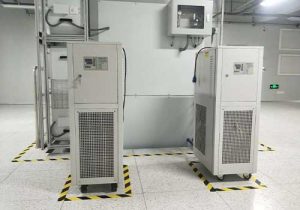small water chiller price
When considering the purchase of a small water chiller, it’s essential to understand the various factors that influence its price. This article delves into the world of small water chillers, examining the differences between air-cooled and water-cooled systems, their efficiency, and the current market prices.

Types of Small Water Chillers and Their Costs:
Air-Cooled Chillers:
Air-cooled chillers are known for their ease of installation and maintenance. They work by absorbing heat from process water and transferring it to the ambient air. According to a price list from ATO.com, the prices of industrial water chiller machines range from 1/2 ton (1750W) to 17 ton (60kW), with compressors power up to 20 HP.
Water-Cooled Chillers:
Water-cooled chillers are more efficient and suitable for larger cooling loads. They require a more complex system, including冷却塔 and water supply, which can increase the initial cost. A report from Business Research Insights indicates that the global water-cooled chillers market size reached US$ 4.26 billion in 2024 and is projected to touch US$ 5.19 billion by 2032, exhibiting a growth rate (CAGR) of 3.2% during 2024-2032.

Efficiency and Cost Factors:
Chiller efficiency is calculated using various metrics, including kW/Ton, COP (Coefficient of Performance), EER (Energy Efficiency Ratio), and IPLV/NPLV. A more efficient chiller consumes less power and delivers more capacity, which can lead to significant energy savings over time, making it cost-effective despite a potentially higher initial cost. According to a study in the REHVA Journal, water-cooled chillers are more efficient than air-cooled chillers, with ESEER ranging from approximately 5 to 7/7.4.
Market Trends and Lifecycle Costs:
The global water chillers market size was valued at USD 5.07 billion in 2018 and is projected to reach USD 9.43 billion by 2032, exhibiting a CAGR of 4.4% during the forecast period. This growth is attributed to factors such as urbanization, expansion of data centers, and adoption of chillers in food and beverage processing. The lifecycle cost (LCC) of waste heat operated absorption chiller is estimated to be US $ 1.5 million, which is about 71.5% low compared to electric powered conventional chillers.

Conclusion:
The cost of a small water chiller can vary significantly based on the type, efficiency, and market trends. Air-cooled chillers offer a more affordable upfront cost, while water-cooled chillers provide higher efficiency and may be more suitable for larger applications. When selecting a small water chiller, it’s crucial to consider not only the initial purchase price but also the total cost of ownership, including operational costs, maintenance, and potential energy savings. By understanding the market dynamics and evaluating the efficiency of different chiller types, buyers can make an informed decision that balances initial investment with long-term operational costs and performance.
Related recommendations
flow heater
426Types of Flow Heaters and Their Working PrinciplesElectric Flow HeatersTypical Applications: Electric flow heaters are commonly used in domestic water heating systems, providing instant hot wate...
View detailsThe Difference between Open Chiller and Water-cooled Box Chiller
1741The Difference between Open Chiller and Water-cooled Box Chiller Everyone knows that chillers can be classified in various and complicated ways. It is mainly divided into two types: air-coole...
View detailswater cooled chiller function
770Understanding Water-Cooled Chiller Function A water-cooled chiller is a type of chiller that uses water as a cooling agent instead of air, providing a more efficient cooling solution for commer...
View detailsindustrial heater price
183Industrial heaters, essential for various heating processes in manufacturing, chemical, and other industries, exhibit a wide range of prices due to multiple interconnected factors. Understanding t...
View details
 LNEYA Chiller
LNEYA Chiller






HelloPlease log in